Key takeaways:
- Gender equality advocacy is crucial for equal rights and opportunities, requiring empathy and unique representation for all individuals.
- Empowering female students fosters not only individual achievement but also broader community growth and innovation.
- Creating supportive environments and mentorship programs significantly enhances the confidence and capabilities of young women.
- Measuring the impact of empowerment can be assessed through increased participation, academic achievements, and positive feedback from students.
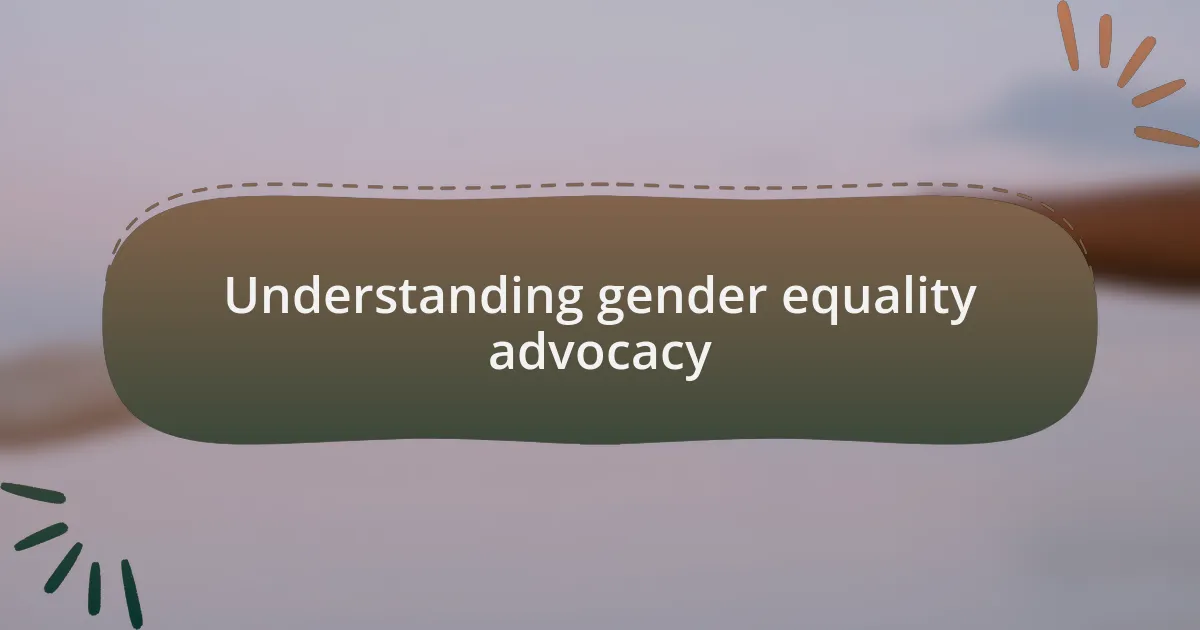
Understanding gender equality advocacy
Gender equality advocacy is a vital movement focused on ensuring that individuals of all genders receive equal rights and opportunities. I remember my first encounter with this concept during a community workshop. It struck me how some voices were often silenced or overlooked simply because of gender. This realization sparked my desire to understand the importance of equal representation and the impact it has on society as a whole.
As I delved deeper into gender equality advocacy, I became increasingly aware of the structural barriers that perpetuate inequality. It’s disheartening to witness the biases that exist in education, workplaces, and politics. Have you ever considered how these injustices might affect someone’s aspirations? For many female students, these barriers can be overwhelming, hindering their potential and aspirations. Understanding these nuances is crucial if we want to change the narrative.
Moreover, gender equality advocacy isn’t just about inviting women into spaces traditionally dominated by men. It’s about reshaping our schools, businesses, and communities to ensure everyone’s contributions are valued equally. During a recent discussion with some female students, I was moved by their stories of resilience and determination. They reminded me that advocacy isn’t a one-size-fits-all approach; it requires listening, empathy, and a commitment to elevating each individual’s unique voice.
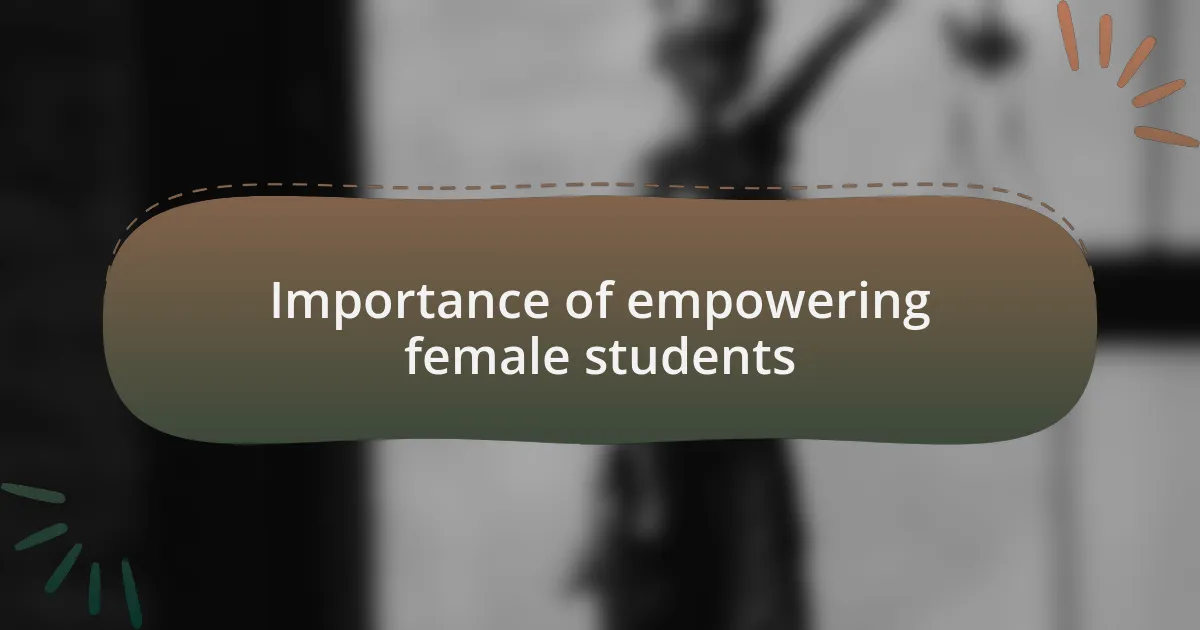
Importance of empowering female students
Empowering female students is essential because it lays the groundwork for a more equitable society. I recall a time when I mentored a group of young girls in science and technology. Their eyes lit up with curiosity and ambition, but you could sense their uncertainty. They often questioned their capabilities, not because they lacked talent, but because society’s expectations had sown seeds of doubt. It’s amazing how fostering confidence in their abilities can ignite a passion for learning that transforms their futures.
The impact of empowering female students extends far beyond individual achievement; it fosters community growth and innovation. I often think about how diverse perspectives can bring fresh solutions to age-old problems. When schools prioritize the empowerment of female students, they cultivate an environment where creativity thrives. Shouldn’t we want classrooms where every student feels they can contribute, no matter their gender? This inclusive atmosphere not only enhances academic success but also prepares students to navigate a multifaceted world collaboratively.
Moreover, the empowerment of young women carries the potential to inspire future generations. I vividly remember meeting a former student turned advocate who tirelessly worked to create opportunities for girls in her community. Her passion was infectious, and it reminded me that when we invest in one female student, we are indirectly uplifting countless others. Isn’t it remarkable to think how a single empowered voice can ripple through a community, effecting lasting change?
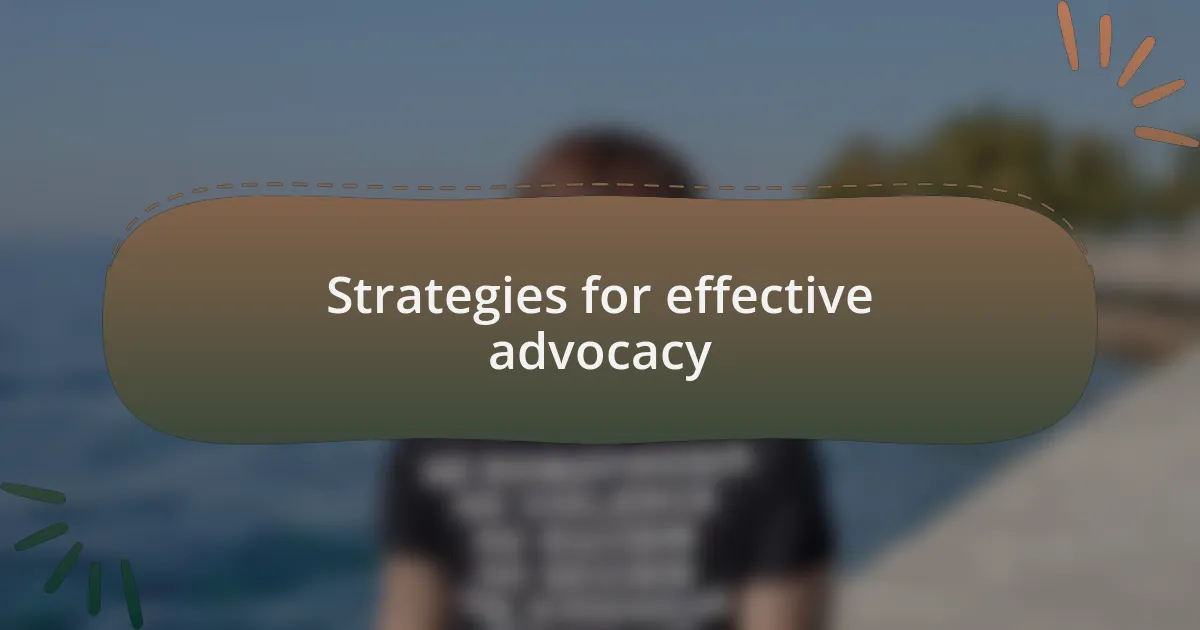
Strategies for effective advocacy
Advocating for female empowerment requires a multifaceted approach that resonates emotionally with both students and educators. In my experience, storytelling plays a crucial role. Sharing personal journeys can break barriers and foster genuine connections. I once shared my own challenges in pursuing a STEM career, and the girls felt a sense of camaraderie. Isn’t it powerful to realize that our struggles can serve as beacons of hope for others?
Building alliances within the community is another essential strategy. I’ve seen how collaboration with local organizations can amplify our message and broaden our reach. One time, we partnered with a nonprofit to host workshops that informed young girls about their rights and opportunities in academia. The energy was palpable, and the impact was lasting. Have you ever witnessed the transformation that occurs when individuals come together for a common cause?
Lastly, creating platforms for female voices is vital. During a recent event I organized, we invited former students to share their success stories. Their passion and resilience inspired current students to envision their futures with confidence. It made me wonder, how many more young women could thrive if we consistently provided them the stage to shine? Remember, uplifting others isn’t just a strategy; it’s a commitment to a shared future.
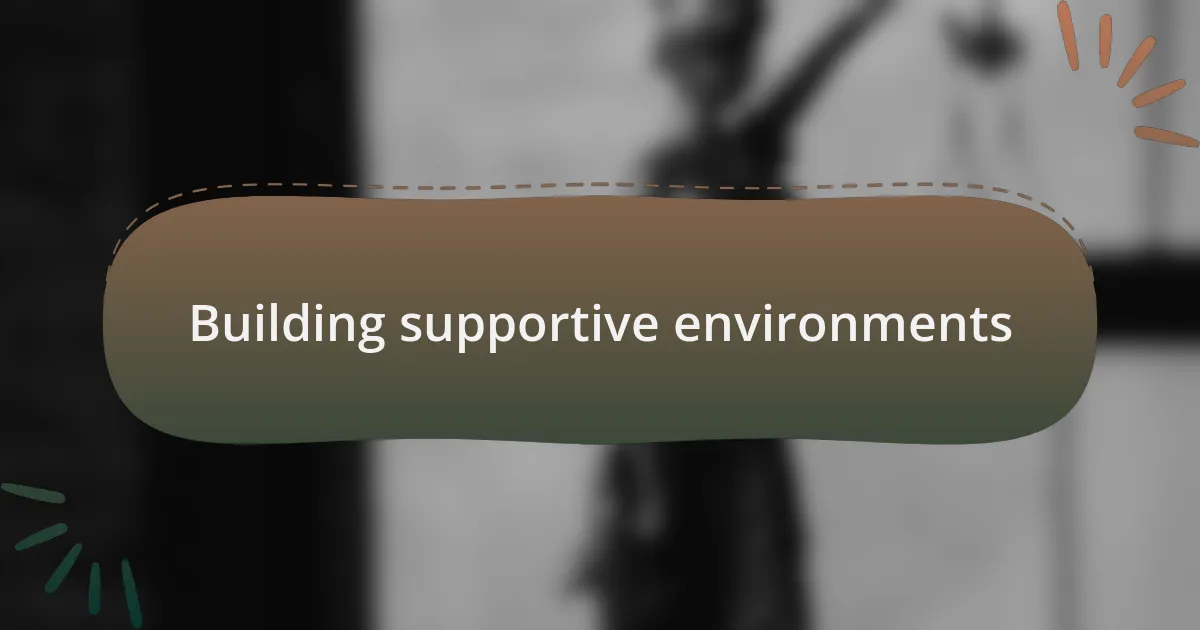
Building supportive environments
Building supportive environments is essential for empowering female students. I remember working with a group of educators who transformed a typical classroom into a safe haven for girls. They incorporated discussions where students could express their feelings and experiences without judgment, fostering an atmosphere where everyone felt validated. How often do we underestimate the power of simply listening?
In another instance, I witnessed the creation of mentorship programs that paired younger female students with inspiring role models. One student, who struggled with self-doubt, blossomed under her mentor’s guidance and encouragement. This relationship wasn’t just about academics; it instilled a sense of belonging and purpose. It made me reflect—what if every girl had access to that kind of support?
Additionally, I’ve seen the impact of inclusive policies that prioritize mental health and well-being. Schools that integrate mental health resources, like counseling services and stress management workshops, demonstrate a commitment to their students’ holistic development. The ripple effect can be profound; when young women feel supported, they excel not just in their studies but in all facets of life. Wouldn’t it be amazing if every educational institution recognized and acted on this need?
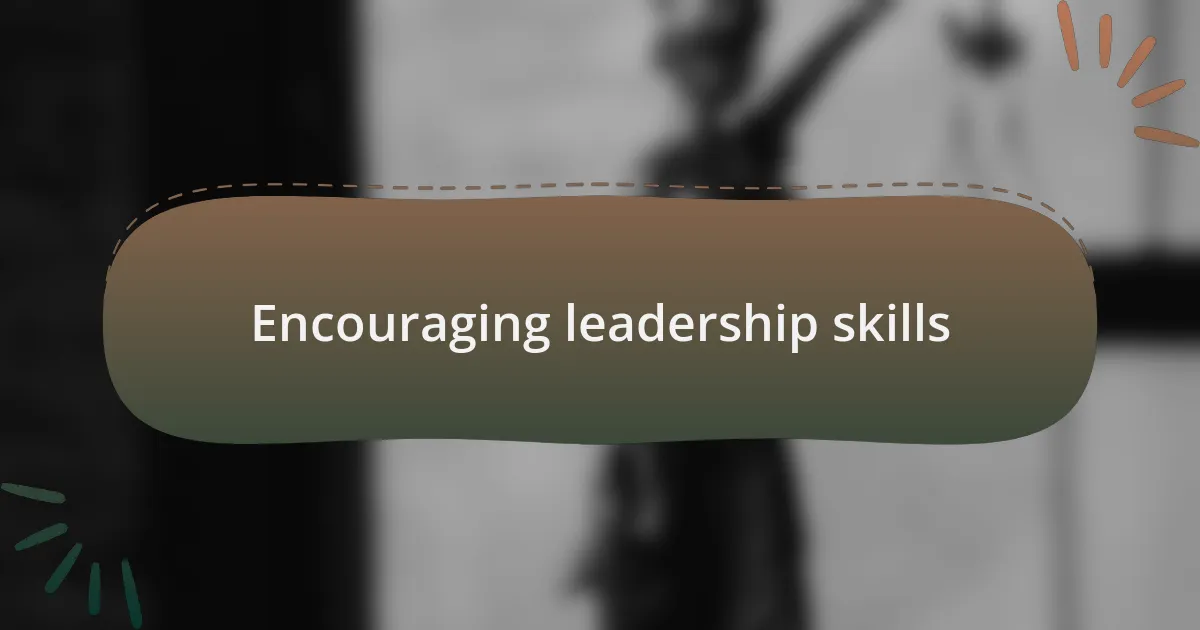
Encouraging leadership skills
Encouraging leadership skills begins with providing opportunities for female students to take the helm in various settings. For instance, I remember organizing a student council election where young girls were encouraged to brainstorm campaign ideas and present their platforms. It was empowering to witness shy participants transform into confident speakers, passionately advocating for their peers. How often do we overlook the potential that lies in allowing students to lead?
In a different scenario, I facilitated a workshop focused on public speaking, where participants could practice and refine their skills in a supportive environment. I observed how the moment they received constructive feedback, their faces lit up with newfound confidence. The change was palpable. I often ask myself: isn’t it fascinating how a little encouragement can unleash hidden potential?
Moreover, I’ve seen the importance of leadership training programs that emphasize collaboration and teamwork. When female students engage in group projects where roles rotate, it cultivates not just leadership but also resilience and adaptability. I recall one student, initially hesitant to speak up, gradually took on a leadership role in her group’s final presentation. Watching her grow was a reminder of the tremendous impact these experiences can have. What if more schools recognized and implemented such programs? The possibilities could be endless.
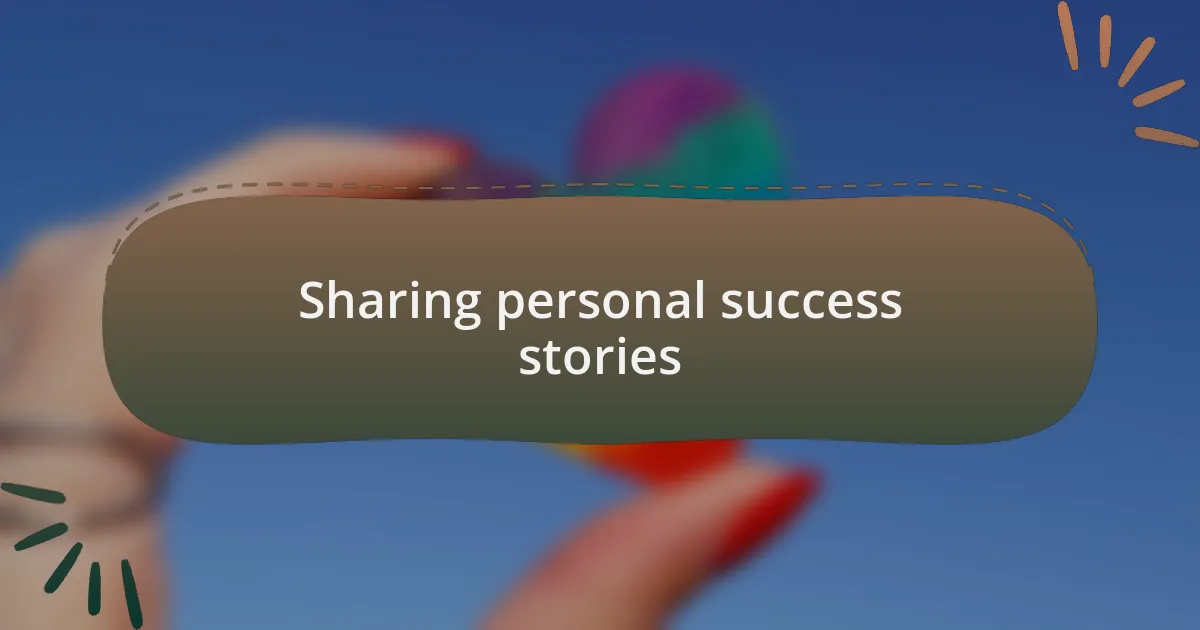
Sharing personal success stories
Sharing personal success stories is a powerful way to inspire young female students. I recall a mentee, Sarah, who struggled with math and often doubted her abilities. After dedicating time to coaching her through challenging concepts, she entered a math competition. When she won first place, the joy and disbelief on her face spoke volumes. Isn’t it remarkable how personal triumphs can ignite a passion for learning?
In another experience, I arranged a showcase where students shared their journeys—challenges faced, lessons learned, and achievements celebrated. One girl, who had battled anxiety, took the stage to talk about how she transformed her fears into motivation, eventually leading a successful community service project. Listening to her story, I felt proud and hopeful. How often do we underestimate the power of storytelling in fostering resilience?
These narratives serve not just as inspiration but as validation of their experiences. Just like when I shared my own struggle with balancing academics and extracurriculars, it resonated with students who thought they were alone. Reflecting on these stories, I think, isn’t this the heartbeat of empowerment? When we hear each other’s success stories, we realize the potential within all of us.
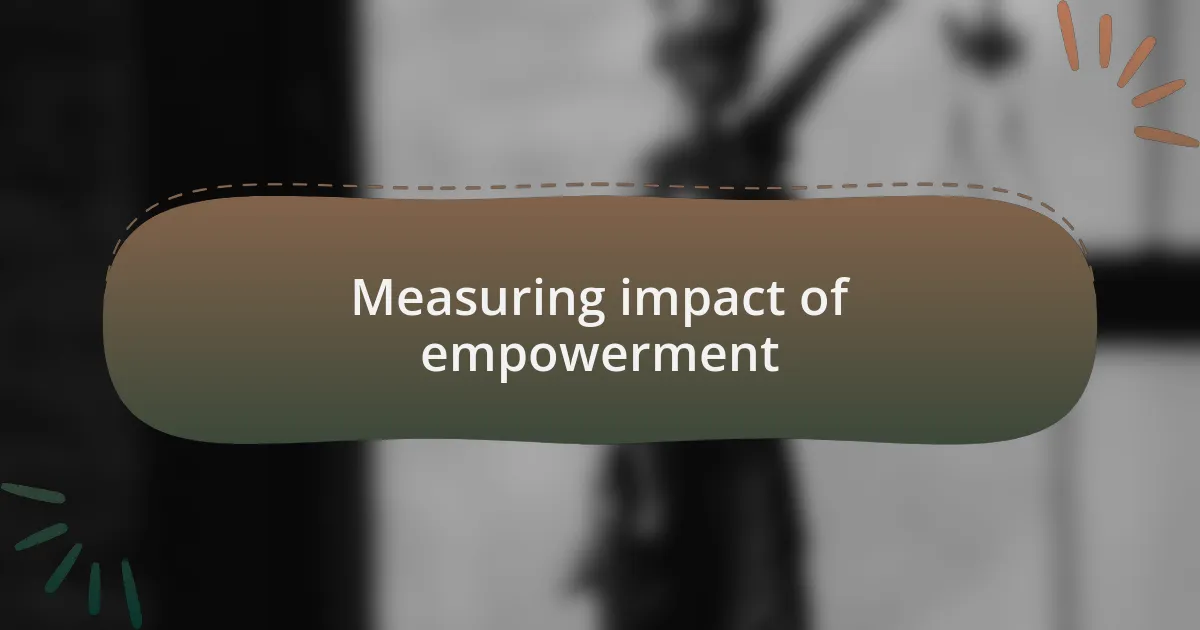
Measuring impact of empowerment
Measuring the impact of empowerment can often feel subjective, yet there are tangible methods to assess its effectiveness. For instance, I observed a noticeable increase in participation rates when I implemented workshops focused on leadership skills for young women. The shift wasn’t just in numbers; the energy and enthusiasm in the room were palpable. Have you ever witnessed a group of once-quiet girls transform into confident speakers, eager to share their ideas?
Furthermore, tracking the academic achievements of these students can highlight the empowerment journey. After initiating a mentorship program, I saw several mentees not only improve their grades but also take on leadership roles in school clubs. It was enlightening to realize that when girls believe in themselves, it directly correlates with their academic success and social engagement. Isn’t it powerful to think that empowerment can ripple through a community?
Lastly, engagement can also be reflected in feedback from the students themselves. During a recent evaluation, one participant shared how the empowerment sessions had opened her eyes to career possibilities she never considered. The ability to articulate such profound realizations is a testament to the program’s effectiveness. How can we measure success more accurately than by the words of those we aim to uplift?